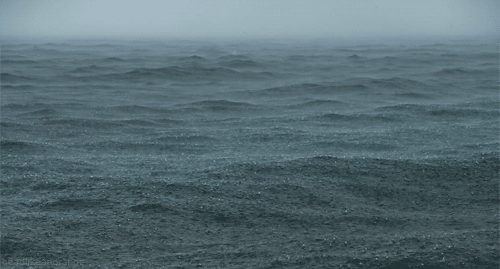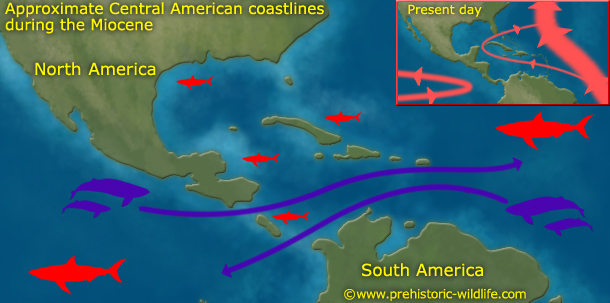
The Water Was The Limit
Carcharocles megalodon would have given birth in shallower waters, and as they grew in age they would leave the shallows and go deeper for bigger prey. This was necessary because C.megalodon was estimated to eat between 1300lbs to 3000lbs of food a day at full maturity. C.megalodon was believed to have hunted in both Atlantic and Pacific oceans, traveling through the Central American Seaway, which was located between north and south America. Based on findings, it was a common route for most aquatic life, which lead to that being a common hunting ground for grown Megalodon.
Due to the fact that C.megalodon is extinct we can’t know the exact way that they gave birth. Sharks at this time period have two main ways that they reproduce , Vivipary or Ovoviviparity. Vivipary is when the shark develops inside the mother and she gives live birth to her young. The young is connected to the mother by an umbilical cord that delivers nutrients from the mother to the young. This is the most common way that shark that are alive right now reproduce.The video above shows this, along with sharks, dolphins such as Bottlenose Dolphins and Spinner Dolphins have also developed this form of birthing. The less common reproduction method that is used is ovovivipary, which is when the eggs are grown inside the mother, but receive no direct nutrients from the mother. Both methods result in a live birth, which is what C.megalodon is believed to have done, based on what similar sharks do, that are alive. Using all of the current information that we have now, we can not rule of either method of birthing.
 As you can see by the picture, the smaller and younger sharks kept in
the shallows compaired to the larger, older ones. This would lead us to
believe that C. megalodon's breeding ground was spread out, but close to
land.
As you can see by the picture, the smaller and younger sharks kept in
the shallows compaired to the larger, older ones. This would lead us to
believe that C. megalodon's breeding ground was spread out, but close to
land.
Carcharocles megalodon is what’s known as a cosmopolitan species, meaning that they are found to be successful all around the world. Being a water animal, it was restricted to the oceans. During the last million years that C.megalodon was alive, the oceans were changing in both depth and temperature, which could have lead the their extinction. Because of the environment that existed during this time, the ocean was warmer overall, and this allowed C.megalodon to travel without many limitations. Based on what we have found, mostly teeth, it is believed that C.megalodon would travel closer to land to give birth and create nurseries for young to live in during the early parts of life. As C.megalodon grew older, it would venture into deeper water and begin to hunt bigger prey as it did.
To see what we beleived happened to the decendents of C.megalodon continue to the Adaptation page.
